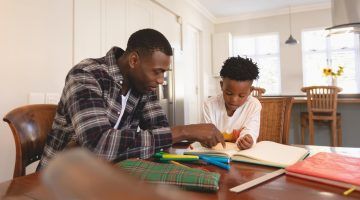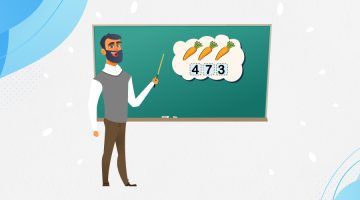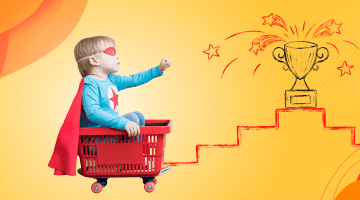Classroom Organization – Simple Tips to Make Your Life Easier
Updated on January 15, 2024
Have you ever felt overwhelmed with chalk pieces, worksheets, books, pens, and pencils at random places at the end of the class? If yes, you know how exhausting it can be to sort them all out every day.
If you can’t take it anymore and seek simple tips to organize your classroom, you’re in the right place.
This time, you will discover 19 classroom organization ideas to keep the classroom clean and ordered and reduce visual noise. You will also learn to store classroom supplies properly and encourage kids to clean up after themselves.
19 Classroom Organization Ideas for Teachers
The following 19 classroom organization ideas help organize the classroom space more conveniently, thus saving a teacher’s time for maintaining order.
#1 Get Classroom Organization Bins
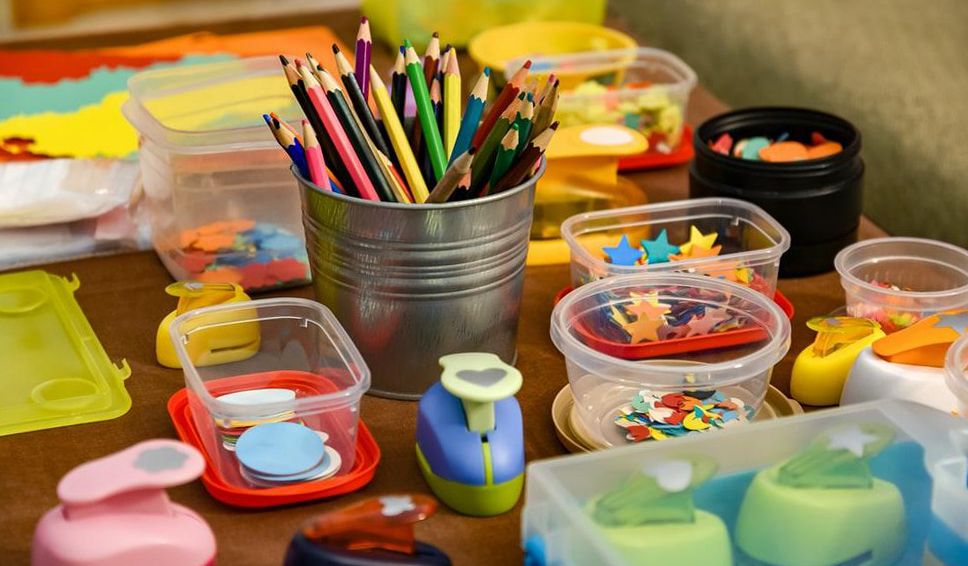
How often do you walk to your cabinet and shuffle papers to pick those you need for the upcoming class? If searching for worksheets and copybooks takes minutes, it’s time for a change.
You can use transparent bins to store books and learning resources for different classes.
Classify and label them accordingly to find what you need quickly. For instance, you can sort worksheets by grade – 1st, 2nd, 3rd, etc. The same goes for books and other papers. Assign each bin for a particular type of learning materials:
- Bin one – 1st-grade math worksheets.
- Bin two – 3rd-grade math books.
- Bin three – 2nd-grade notebooks.
#2 Use Ribbons for Notebooks: Elementary Classroom Organization
As soon as you say: “Open your books on page 67,” intensified paper rustling ripples your classroom. Tom has already found this page, while Katie is still flipping the book.
You can reduce this time-eating step by asking kids to attach ribbon bookmarks on their books. Or, you can make those by yourself. Why do this? It’s pretty simple – a ribbon bookmark attached to the book will always be there, and a little student won’t lose it. Instead, they will always have a convenient bookmark at hand to open their books on the necessary page.
#3 Laminate Your Worksheets: Classroom Organization Hacks
Teachers often use worksheets to explain math topics and provide students with practice exercises. While worksheets are fun, printing single-use papers all the time is not the same
If you laminate your worksheets, you’re a genius. If you don’t, take a closer look at why this classroom organization idea will help you save dozens of hours:
- You will have reusable worksheets that don’t fade over time.
- You won’t need to download and print new worksheets every time as children won’t write on the paper.
- You will save many hours on searching for new worksheets.
- You will relieve yourself from unnecessary unpaid work.
Buy erasable markers and hand them to your children when you need them to work on worksheets to make these learning resources fully reusable. Once your kids finish the exercises, clean up the worksheets and put them in your worksheets’ storage bin.
#4 Tips and Tricks of Classroom Organization: Supplies
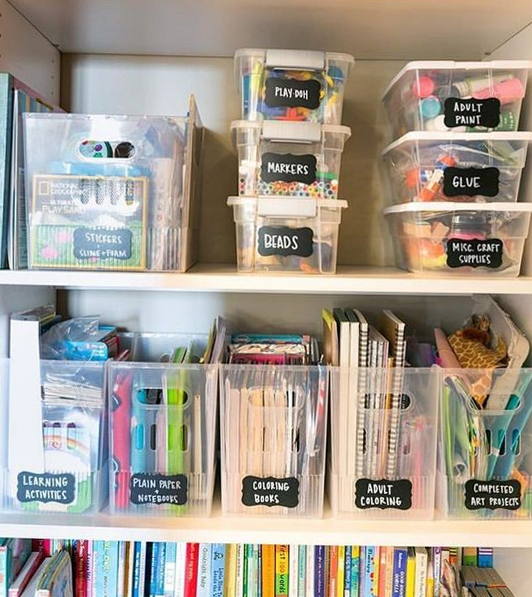
Pens, markers, chalks, pencils, scissors, glue sticks, erasers, and rulers – you may find them at random places at the end of the class, especially if you store them all in a single desk sorter.
You can optimize classroom supplies’ organization by sorting and labeling the items by type. Dedicate a separate container for each type of item and label it accordingly. As a result, you will have containers for pens, pencils, markers, etc.
Why do this? It will help you find necessary supplies by throwing a glimpse at the containers.
Plus, you can ask children to put classroom supplies in their containers after kids use them. In this way, you will have all those markers in the right place at the end of the class.
#5 Sort Paper and Cardboard by Color: Preschool Classroom Organization Ideas
Even if you have a dedicated place to store cardboard, you can make it more organized than ever if you sort paper and cardboard sheets by color. This tip will especially come in handy for preschool classroom organization.
Why do this? You (and preschoolers) will find cardboard of the necessary color much quicker than if you leave different pieces laying one on one in the cabinet.
#6 Store Learning Materials by the Topic
Just imagine: you are pulling the drawers one after another, trying to recall where you left those division worksheets last time.
Now imagine the opposite: you approach a book display and see counting-dedicated copybooks and worksheets on the upper shelf. Then, you see long-division resources resting on the bottom shelf. You pick the ones you need in a couple of seconds.
Another helpful piece of advice is to organize learning materials by the topic. It will also save time on searching for things.
#7 Improve Classroom Closet Organization
Every teacher would love a well-organized cabinet or closet to find things quickly. The good news is that you can do so by investing minimal money. You can sort items in your closet by topic using bins, smaller containers, and organizers.
Just follow the #6 tip – dedicate each drawer/cabinet to a different kind of teaching supplies. It might be better than a book display with filled bins as a well-organized teacher’s closet reduces visual noise.
Math & Reading Camp
Join us to help your kid achieve
their full math and reading potential!
 Apply now
Apply now
#8 Involve Kids
Students and teachers take part in the learning process equally. Consequently, it will be safe to assume that they should take an equal part in keeping the classroom clean.
How do you make students clean the classroom? You can make an improvised “job board” for kids – a to-do list of chores:
- Cleaning the chalkboard.
- Wiping the dust.
- Sorting out the stationery.
- Etc.
You can incentivize kids with extra “classroom duties” points to help you clean the premise.
#9 Store Assignments for Absent Students in a Bin
Whether you use laminated worksheets or not, you may not go without some printables. Ideally, all your students are present in the class, and you hand assignments to each of them. But when someone is absent, where do you get unused printables? You can use a special bin to store assignments for absent students.
#10 Dedicate Convenient Storage for Earbuds/Headphones
Headphones or earbuds reduce noise and promote better focus in students. But storing them might be another headache.
What about hooks for earbuds and bins for headphones? Here are a couple more ideas:
- Earbud cases with carbines. You can conveniently attach them to a hook rack.
- Small zip bags with binders attached to wall hooks.
#11 Use a Dedicated Bin for Unchecked Copies
As a teacher, you have to check dozens of copies, workbooks, and worksheets. If you feel uneasy finding unchecked assignments or keeping track of checked ones, store them in different bins:
- One is for unchecked copies.
- The other one is for checked copies.
Doing so will help you manage students’ assignments faster, reducing time to find the ones you need or search for a place to store them.
#12 Use a Teacher’s Cart: Kindergarten Classroom Organization Ideas
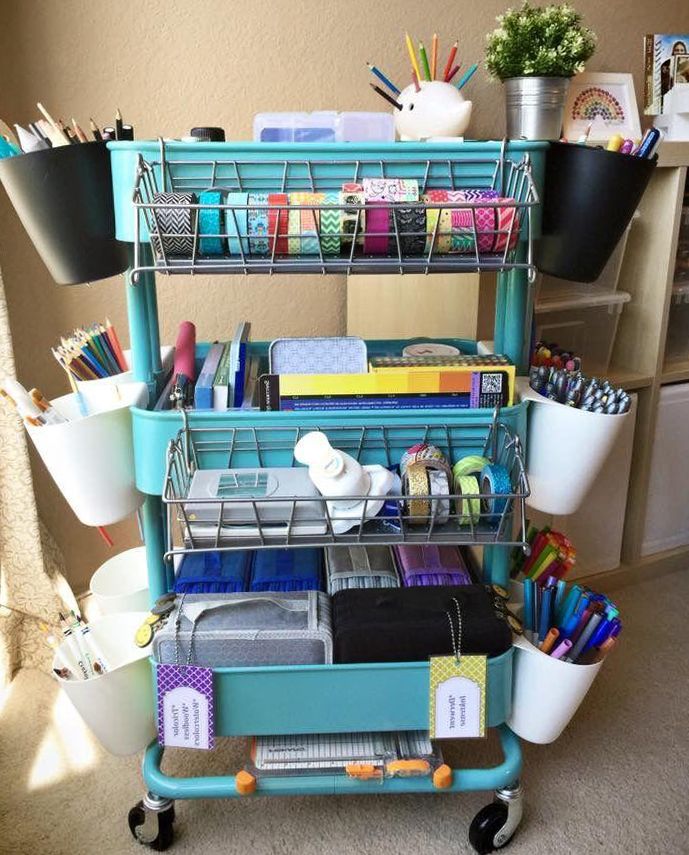
Kindergartners love playing, and you will need extra stuff like crayons, markers, and colorful cardboard sheets to entertain them. However, you may find it exhausting and time-consuming to walk through the entire classroom to pick up crayons and return them to your desk. One way to overcome the issue is by storing the most usable supplies beside you. But if this scenario plays out, you might end up surrounded by too much stuff.
A smarter way to manage your stuff is to use a teacher’s cart. You can load this device with the most frequently used items.
#13 Store Materials for the Week in One Spot
You can reduce extra preparations for each class if you collect all copies and learning resources for the current week in one place. Let this place be a five-drawer cabinet or five separate plastic bins.
Label them from Monday to Friday, and you’re good to go. Prepare for the upcoming week at the end of the current one. Once you come to school on Monday, you can open the drawer/plastic bin and pull the required teaching materials without hassle.
#14 Use a Numbering System: Classroom Library Organization Ideas

You might sort books by topic in separate bins. But you risk mixing them anyway as you will eventually forget which book comes in which bin. You can overcome this problem by using a numbering system. Here is how it works:
- You sort books and learning resources by topic: counting, addition, subtraction, etc.
- You get a bin and assign it to counting books. You label it “1.”
- Then, you label each counting book “1.”
- Repeat the procedure with other learning materials.
- You know that books 1, 2, and 3 go to bins 1, 2, and 3.
In this way, you will never confuse books.
#15 Store Supplies in Mason Jars: DIY Classroom Organization Ideas
You can also store crayons, markers, and colored pencils in mason jars. Just sort them by color, and you will get eye-pleasing storage for your class supplies.
Why do this? First and foremost, it’s convenient – you don’t need to search for desired markers as you can see all of them waiting for you behind the shiny glass. Second, these crayon-filled mason jars add an aesthetic look and personality to your classroom.
#16 Get Bins for Kids’ iPads
Do your students use iPads? It’s an excellent chance to keep the devices organized in a dedicated place – be it a shelf in your cabinet or a few plastic bins next to the charging rack.
The approach will help your students manage these gadgets – they will have a special place to put them in at the end of the class.
Math & Reading Camp
Join us to help your kid achieve
their full math and reading potential!
 Apply now
Apply now
#17 Use Stickers or Popsicle Sticks for Class Organization
Before this point, we focused on storage organization to save time on finding things and keeping them in the right places. Now, it’s high time to talk about class participation and performance. Traditionally, students raise their hands to answer questions. Yet, raising hands might not be the best option for all students. Some are shy, while others keep their hands raised all the time.
As a result, the most active students earn higher grades, participate in classroom activities, and learn the studied topics. On the contrary, the shiest students underperform.
You can make everyone participate equally by using popsicle sticks or stickers. Here is how it works:
- You buy as many popsicle sticks as to match the number of your students.
- You label each popsicle with each student’s name.
- You draw popsicles randomly when it’s time to answer the questions or solve equations on the chalkboard.
As a result, all students will have an equal chance to participate in the class and earn good grades no matter how shy they are.
Moreover, this method will encourage all students to prepare for the class better. Underperforming kids won’t have a chance to hang back, while the most active students will do their job.
#18 Use Bells to Get Student’s Attention
How often do you yell to get students’ attention? Even if you strain your vocal cords two times per class, you will risk wheezing instead of speaking at the end of the day.
You can avoid this problem and quickly get students’ attention with a simple doorbell or a special attention bell. No need to raise your voice anymore – you press the button, and soon the classroom fills with silence.
#19 Get a Teacher’s Backpack
While a teacher’s cart is an excellent tool to move within the classroom, you might need a lighter companion, too. If you go one floor down and one floor up pretty often, you might need a teacher’s backpack.
It’s more convenient to carry your items than in a usual bag – you can get your hands free and carry extra stuff.
The Final Word
As a teacher, you spend a substantial portion of your day in the classroom, and it’s a good chance to organize this place to your liking. Making things easy to navigate and access is the cornerstone of classroom organization. You can implement the tips from this post if you like them.
Or, you might come up with better ideas yourself. The main thing is not to be afraid or shy about personalizing your classroom. Your future self will thank you a lot for keeping things where you want them to be.




